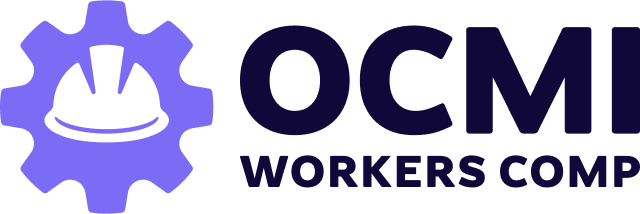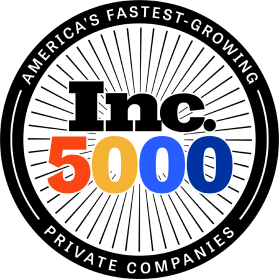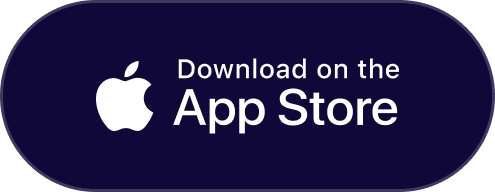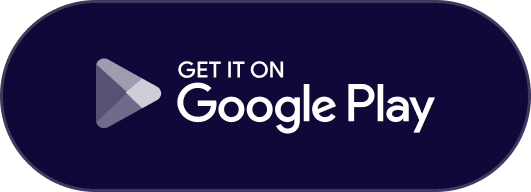Preventing Work Injuries: Strategies for a Safer Workplace (OCMI)
Importance Of Workplace Safety And Injury Prevention
Workplace safety and injury prevention are of paramount importance in any organization.
Ensuring a safe work environment not only protects employees from harm but also contributes to increased productivity, employee morale, and overall business success.
By prioritizing workplace safety, businesses can reduce the occurrence of accidents, injuries, and illnesses, leading to lower healthcare costs, fewer absences, and improved employee retention.
Moreover, a strong commitment to safety demonstrates an organization’s care for its workforce, enhancing its reputation and attracting top talent.
The purpose of this blog post is to equip readers with effective strategies for creating a safer work environment.
By providing practical insights and recommendations, the post aims to empower employers and employees alike to take proactive measures in preventing work-related injuries.
It will cover a range of topics, including understanding risks, establishing a safety culture, implementing safety measures, promoting ergonomics, handling hazardous materials, emergency preparedness, incident reporting, and ongoing evaluation.
By following these strategies, organizations can foster a culture of safety and protect the well-being of their employees while reaping the benefits of a safer and more productive workplace.
Understanding the Risks in the Workplace
Understanding the risks associated with the work environment is crucial for effective workplace safety.
This involves several key aspects.
Firstly, identifying common workplace hazards is essential. These can include physical hazards such as slippery floors, falling objects, or machinery accidents, as well as chemical hazards, ergonomic risks, and potential threats related to work processes or tasks.
By being aware of these hazards, employers can take proactive measures to mitigate them and prevent accidents and injuries.
Secondly, assessing the potential risks specific to the industry is vital. Each industry has its own unique set of risks and hazards. For example, construction sites face hazards related to working at heights, while healthcare facilities may have risks associated with infectious diseases or patient handling.
By conducting industry-specific risk assessments, employers can gain a comprehensive understanding of the potential dangers present in their particular field and develop targeted safety strategies accordingly.
Lastly, recognizing the impact of work-related injuries on employees and businesses is crucial.
Workplace injuries can have severe consequences, ranging from physical pain and suffering for the affected employees to financial burdens for both the workers and the organization.
Employees may face medical expenses, loss of income, and potential long-term disabilities, while businesses may experience increased insurance costs, decreased productivity, and damage to their reputation.
Understanding these impacts highlights the importance of prioritizing workplace safety and taking proactive measures to prevent injuries, protect employees, and safeguard the overall well-being and success of the business.
Developing a Safety Culture
Developing a safety culture within an organization is essential for creating a workplace where safety is valued and prioritized by everyone.
This involves several key components. Firstly, promoting a culture of safety from top to bottom is crucial. Leadership should lead by example, demonstrating a commitment to safety through their actions and decisions.
When employees observe their superiors prioritizing safety, it reinforces the importance of safe practices throughout the organization.
Secondly, encouraging employee engagement and participation in safety initiatives is vital. Employees are the frontline in identifying potential hazards and implementing safety measures.
By involving employees in safety committees, training sessions, and decision-making processes, their valuable insights and experiences can contribute to a safer work environment.
Empowering employees to take ownership of safety cultivates a sense of responsibility and increases their investment in maintaining a safe workplace.
Lastly, establishing clear safety policies and procedures is paramount. Organizations should develop comprehensive safety guidelines that address various potential hazards and provide step-by-step procedures to mitigate risks.
These policies should be communicated effectively to all employees and regularly reviewed and updated as needed.
Clear expectations regarding safety protocols help ensure consistency and compliance across the organization, minimizing the chances of accidents and injuries.
By developing a safety culture that promotes a top-down commitment, encourages employee engagement, and establishes clear policies and procedures, organizations can foster an environment where safety becomes ingrained in every aspect of work.
This not only reduces the likelihood of accidents but also creates a sense of trust, well-being, and productivity among employees, ultimately contributing to the overall success of the organization.
The Crucial Role of Employee Training and Education in Workplace Safety
The following aspects highlight their significance:
Providing Comprehensive Safety Training
Providing comprehensive safety training is of utmost importance. It ensures that employees are equipped with the necessary knowledge and skills to identify and address potential hazards.
Through comprehensive training programs, employees can learn about safety protocols, proper use of equipment and machinery, emergency procedures, and best practices for injury prevention.
By investing in thorough training, employers empower their workforce to make informed decisions and take proactive measures to maintain a safe working environment.
Incorporating Regular Safety Education Sessions
Incorporating regular safety education sessions is essential for reinforcing and updating employees’ knowledge and skills.
Safety practices and regulations evolve over time, and it’s crucial to keep employees informed about the latest standards and techniques.
Regular education sessions, such as workshops, seminars, or safety briefings, provide opportunities to address emerging safety concerns, reinforce good practices, and address any questions or concerns raised by employees.
By keeping safety at the forefront of employees’ minds, organizations foster a culture of continuous learning and improvement.
Ensuring Employees Are Equipped With The Knowledge
Ensuring employees are equipped with the knowledge and skills to prevent injuries is critical for maintaining a safe workplace.
Comprehensive training and education programs should focus on imparting not only theoretical knowledge but also practical skills.
Employees should be trained on proper use of personal protective equipment (PPE), safe handling of tools and materials, ergonomic practices, and recognizing early signs of potential hazards.
By equipping employees with these essential skills, organizations empower them to actively participate in injury prevention efforts and contribute to a safer working environment.
By prioritizing employee training and education, organizations demonstrate their commitment to employee well-being and safety.
A knowledgeable and skilled workforce not only minimizes the risk of workplace accidents and injuries but also boosts employee confidence, engagement, and productivity.
Providing comprehensive training, incorporating regular education sessions, and ensuring employees are well-equipped to prevent injuries are fundamental steps towards creating a safety-conscious culture and protecting the welfare of both employees and the organization.
Implementing Effective Safety Measures
Implementing effective safety measures is a key aspect of ensuring a safe work environment.
The following points elaborate on important components of this process:
A. Conducting regular workplace inspections and audits is crucial for identifying potential safety hazards. By proactively inspecting the workplace, employers can identify any existing or potential risks that may compromise the safety of employees.
These inspections can cover various aspects such as equipment, machinery, electrical systems, structural integrity, and housekeeping.
Regular audits enable employers to assess compliance with safety regulations, evaluate the effectiveness of existing safety protocols, and implement necessary improvements to mitigate risks.
B. Identifying and addressing potential safety hazards promptly is vital for maintaining a safe workplace. Through risk assessments, employers can identify potential hazards and take proactive measures to eliminate or control them.
This may involve modifying work processes, implementing engineering controls, or providing additional safety equipment.
Prompt hazard identification and mitigation significantly reduce the chances of accidents and injuries, ensuring the well-being of employees.
C. Utilizing appropriate personal protective equipment (PPE) is a critical safety measure. PPE includes items such as protective clothing, helmets, gloves, goggles, and respiratory protection.
Employers should assess the workplace and determine the specific PPE requirements based on the identified hazards.
It is essential to provide employees with proper training on the correct use, maintenance, and limitations of PPE.
By ensuring the availability and proper use of appropriate PPE, employers can significantly reduce the risk of injuries and safeguard employees from potential hazards.
By implementing effective safety measures, organizations demonstrate a proactive approach to preventing workplace injuries.
Regular inspections and audits help maintain a safe work environment by identifying and addressing hazards promptly. The use of appropriate PPE provides an additional layer of protection for employees.
By prioritizing these safety measures, organizations create a culture of safety, protect their employees’ well-being, and foster a productive and thriving workplace.
Ergonomics and Workstation Design
Ergonomics and proper workstation design are essential for promoting employee well-being and preventing work-related injuries.
Creating ergonomic workstations involves designing work environments that minimize physical strain and discomfort. This includes providing adjustable chairs, ergonomic keyboards, and monitors at appropriate heights to support proper posture.
Additionally, ensuring the proper positioning of equipment and tools, such as placing frequently used items within easy reach, reduces the risk of repetitive strain injuries.
Encouraging employees to take regular breaks and engage in stretching exercises helps alleviate muscle fatigue and prevents the development of repetitive strain injuries.
By prioritizing ergonomics and workstation design, organizations enhance employee comfort, reduce the likelihood of injuries, and promote overall productivity and well-being in the workplace.
Hazardous Materials and Chemical Safety
Ensuring proper handling and safety measures for hazardous materials and chemicals is paramount in the workplace.
This involves several key aspects.
Firstly, proper handling, storage, and disposal of hazardous materials must be prioritized to minimize the risk of accidents and exposure. This includes following established protocols for containment, labeling, and storing hazardous substances in designated areas.
Secondly, providing comprehensive training on chemical safety is crucial to educate employees about the potential risks, safe handling procedures, and appropriate use of protective measures such as gloves, goggles, and respirators.
By equipping employees with the necessary knowledge and skills, organizations empower them to handle hazardous materials safely.
Lastly, ensuring compliance with safety regulations regarding hazardous substances is essential. Organizations must stay up-to-date with relevant safety guidelines and regulations, implement necessary safety protocols, and regularly review and audit their processes to ensure adherence.
By prioritizing hazardous materials and chemical safety, businesses protect their employees, minimize the risk of accidents or exposure, and maintain compliance with applicable regulations.
Emergency preparedness and response are critical components of maintaining a safe work environment.
Firstly, developing an emergency action plan is essential to outline procedures and protocols to be followed during various emergency situations.
This plan should include evacuation routes, designated assembly areas, and roles and responsibilities of employees.
Secondly, conducting drills and training sessions for emergency situations allows employees to familiarize themselves with procedures and practice their response. Regular drills help ensure a prompt and efficient response in real emergencies.
Lastly, providing clear communication channels for reporting emergencies is vital. Employees should have access to means of reporting incidents promptly, such as emergency hotlines or designated personnel.
Effective communication ensures that emergency situations can be addressed swiftly, minimizing the potential impact on employee safety and property.
By prioritizing emergency preparedness and response, organizations demonstrate their commitment to employee well-being and can effectively mitigate risks during unexpected events.
Encouraging the reporting and investigation of incidents is crucial for maintaining a safe work environment and preventing future accidents.
Firstly, organizations should establish a non-punitive reporting system that encourages employees to report incidents and near misses without fear of reprisal. This promotes transparency and allows for a comprehensive understanding of potential hazards.
Secondly, conducting thorough investigations following incidents is essential to identify the root causes and contributing factors. By analyzing the circumstances surrounding an incident, organizations can uncover underlying issues and develop targeted solutions.
Lastly, implementing corrective measures based on investigation findings helps prevent similar incidents from occurring in the future.
This may involve revising procedures, providing additional training, or implementing engineering controls. By fostering a culture of reporting and investigation, organizations demonstrate their commitment to continuous improvement and employee safety.
Ongoing safety evaluation and improvement are crucial for maintaining a safe work environment and adapting to changing circumstances.
Firstly, organizations should conduct regular reviews of their safety policies and procedures to ensure their effectiveness and alignment with best practices. This evaluation allows for the identification of areas that require updates or improvements.
Secondly, seeking feedback from employees regarding safety concerns is vital.
Employees are often on the frontline and may have valuable insights and suggestions for enhancing safety practices. Actively listening to their feedback fosters a culture of open communication and involvement.
Lastly, organizations should continuously improve their safety practices based on lessons learned from incidents, near misses, and industry developments.
Implementing corrective actions and making necessary adjustments to prevent recurrence demonstrates a commitment to ongoing improvement.
By prioritizing ongoing safety evaluation and improvement, organizations proactively address potential risks and create a workplace that is continuously evolving towards higher safety standards.
In conclusion, creating a safer workplace requires the implementation of key strategies.
This involves identifying risks, cultivating a top-to-bottom safety culture, providing thorough training, implementing effective measures, promoting ergonomic workstations, handling hazardous materials correctly, preparing for emergencies, and encouraging incident reporting and investigation.
It is crucial to prioritize workplace safety proactively to protect employees’ well-being and foster a successful business.
By embracing these strategies, organizations can create a safer and healthier work environment, reduce the likelihood of accidents and injuries, and enhance overall productivity and employee satisfaction.
Maximize Your Earnings: Using a Tax Calculator to Optimize Your Paycheck
Maximizing Paychecks Through Tax Calculations
Are you interested in maximizing your take-home pay? Understanding how tax calculations work can help you optimize your paycheck and keep more money in your pocket.
By leveraging tax deductions and making accurate withholding adjustments, you can ensure that you’re not overpaying taxes and maximize your earnings.
In this blog post, we’ll delve into the topic of maximizing paychecks through tax calculations, exploring the benefits, strategies, and considerations involved.
Get ready to unlock the potential of your paycheck and take control of your finances with smart tax calculations.
Understanding Tax Deductions and Optimizing Take-Home Pay
Don’t leave money on the table!
Understanding tax deductions is crucial for optimizing your take-home pay. By knowing which expenses can be deducted, you can reduce your taxable income and potentially increase your refund or lower your tax liability.
This knowledge empowers you to make informed financial decisions and maximize the money you bring home.
Get ready to uncover the secrets of tax deductions and take control of your take-home pay.
Understanding Tax Deductions and Withholdings
Tax Deductions And How They Reduce Taxable Income
Tax deductions are powerful tools that reduce your taxable income, ultimately lowering the amount of tax you owe. By identifying eligible expenses, such as mortgage interest or charitable contributions, you can subtract them from your income, potentially resulting in significant savings.
Types Of Deductions Available
There are two main types of deductions: standard deductions and itemized deductions. Standard deductions are predetermined amounts set by the IRS, while itemized deductions allow you to claim specific expenses. Understanding these options helps you choose the most beneficial deduction method for your financial situation.
Significance Of Accurately Calculating Withholdings
Accurate calculation of withholdings is crucial to avoid overpaying or underpaying taxes. Withholdings are the amounts withheld from your paycheck to cover your anticipated tax liability. Adjusting them correctly ensures you’re not giving the government an interest-free loan or facing a tax bill come filing season.
How a Tax Calculator Can Accurately Estimate Tax Liability And Deductions
A tax calculator is a powerful tool that can accurately estimate your tax liability and deductions.
By inputting relevant financial information, such as income, deductions, and credits, the tax calculator performs complex calculations based on current tax laws.
It considers various factors, including filing status, dependents, and applicable tax rates, to provide you with an estimate of your tax liability.
Additionally, a tax calculator can help you identify potential deductions and credits that you may be eligible for, maximizing your tax savings.
With its precision and efficiency, a tax calculator takes the guesswork out of tax planning, allowing you to make informed financial decisions and optimize your tax outcomes.
Step-by-Step Guide to Using a Tax Calculator to Maximize Paycheck
ONE: Start by gathering the necessary information, such as your income and potential deductions. Have your W-2 forms, 1099s, and any relevant expense records ready. This will ensure you have accurate data to input into the tax calculator.
TWO: Next, input the collected data into the tax calculator. The calculator will typically prompt you to enter your filing status, income details, deductions, and credits. Follow the instructions provided by the calculator, and take your time to input the information accurately.
THREE: Once you’ve entered all the required data, the tax calculator will process the information and provide you with results. These results will include your estimated tax liability, potential deductions, and credits. Pay attention to any areas where you may be able to make adjustments to maximize your take-home pay.
Interpreting the results is crucial. The tax calculator may highlight areas where you can optimize your tax situation.
For example, it may suggest increasing contributions to tax-advantaged accounts or adjusting your withholdings. Take the time to review the results carefully and consider the recommendations provided.
To maximize your take-home pay, make adjustments based on the recommendations from the tax calculator.
This could involve tweaking your withholding allowances or exploring opportunities for additional deductions.
By utilizing the insights gained from the tax calculator, you can strategically optimize your tax situation and ensure you’re maximizing your paycheck.
Remember, tax laws can change, so it’s essential to review your tax situation periodically, especially if there are any significant life events or financial changes.
By following this step-by-step guide and using a tax calculator, you can confidently navigate the tax landscape, make informed decisions, and maximize your take-home pay.
Quick Tips for Optimizing Paycheck Withholdings
Tip # 1: Adjust withholding allowances on your W-4 form to align with your tax situation.
Tip # 2: Use the IRS withholding calculator for personalized recommendations.
Tip # 3: Review and update withholdings regularly, especially after life changes.
Tip # 4: Contribute to tax-advantaged accounts like 401(k)s to lower taxable income.
Tip # 5: Seek professional advice for complex tax situations.
Potential Risks of Inaccurate Calculations or Improper Adjustments
Risk # 1: Underpayment penalties and interest charges.
Risk # 2: Overpayment of taxes, reducing take-home pay.
Risk # 3: Financial strain due to a large tax bill.
Risk # 4: Missed opportunities for tax savings and credits.
Risk # 5: Increased risk of audit by the IRS.
To avoid these risks, seek professional advice, use reliable tax software, keep detailed records, and stay informed about tax laws.
By utilizing tax calculations, you can maximize your paychecks and make the most of your hard-earned money.
Understanding tax deductions, optimizing withholdings, and utilizing tax calculators can significantly impact your take-home pay.
Take advantage of tax calculators and make informed adjustments to optimize your tax situation. By doing so, you can ensure that you’re maximizing your paychecks and keeping more money in your pocket.
Take control of your finances and make informed decisions for optimal take-home pay.
Three Benefits of Payroll Billing – What is Payroll? Are you looking for a better way to manage your workers comp payments?
In the construction industry, jobs can last anywhere from a few days to several months. This makes it difficult to keep track of payroll, especially when you have a lot of employees working on different projects. Payroll billing can help make things easier and save you time and money.
What is Payroll?
Payroll is often seen as a necessary evil – a complex and time-consuming task that must be carried out in order to keep workers happy and the wheels of industry turning. But what exactly is payroll, and why is it so important?
Payroll is simply the process of calculating how much an employee should be paid for their work. This includes things like their hourly wage or salary, any overtime they may have worked, and any deductions that need to be made for things like taxes or health insurance. By law, all employers must withhold these deductions from their employees’ paychecks, and then remit them to the appropriate government agencies.
While payroll may seem like a headache, it’s actually a vital function for any business. Not only does it ensure that workers are paid correctly and on time, but it also helps to prevent fraud and embezzlement. In addition, by keeping accurate records of employee earnings, businesses can avoid costly mistakes when it comes time to file taxes.
So while payroll might not be the most glamorous part of running a business, it’s certainly one of the most important.
Workers’ compensation insurance is another important aspect of payroll. This insurance protects workers if they are injured on the job.
In Florida, workers’ compensation insurance is required for all businesses with four or more employees.
For most businesses, payroll is handled by a dedicated payroll department or an external payroll service. This ensures that workers are paid correctly and on time.
Three big benefits of using payroll billing for your construction business
When employees clock in and out of their shifts, their hours are automatically logged into the system. This means you don't have to worry about keeping track of paper time sheets or trying to decipher illegible handwriting.
With payroll billing, you can get paid faster because invoices are automatically generated based on the hours your employees work. This means you don't have to wait for employees to turn in their time sheets or chase down missing information. All of the information you need is already in the system, so you can get paid as soon as the job is completed.
If you outsource your accounting, payroll billing can save you money on accounting fees. This is because all of the information is already entered into the system, so your accountant doesn't have to spend time inputting data. This can save you hundreds or even thousands of dollars each year in accounting fees.
Payroll billing is a great way to save time and money on your construction business. It allows you to easily track employee hours, get paid faster, and even save money on accounting fees. If you’re not currently using payroll billing, now is the time to start! Your business will thank you for it.
We here at OCMI have various options. Simply click on one of the buttons below to be connected to an agent.




